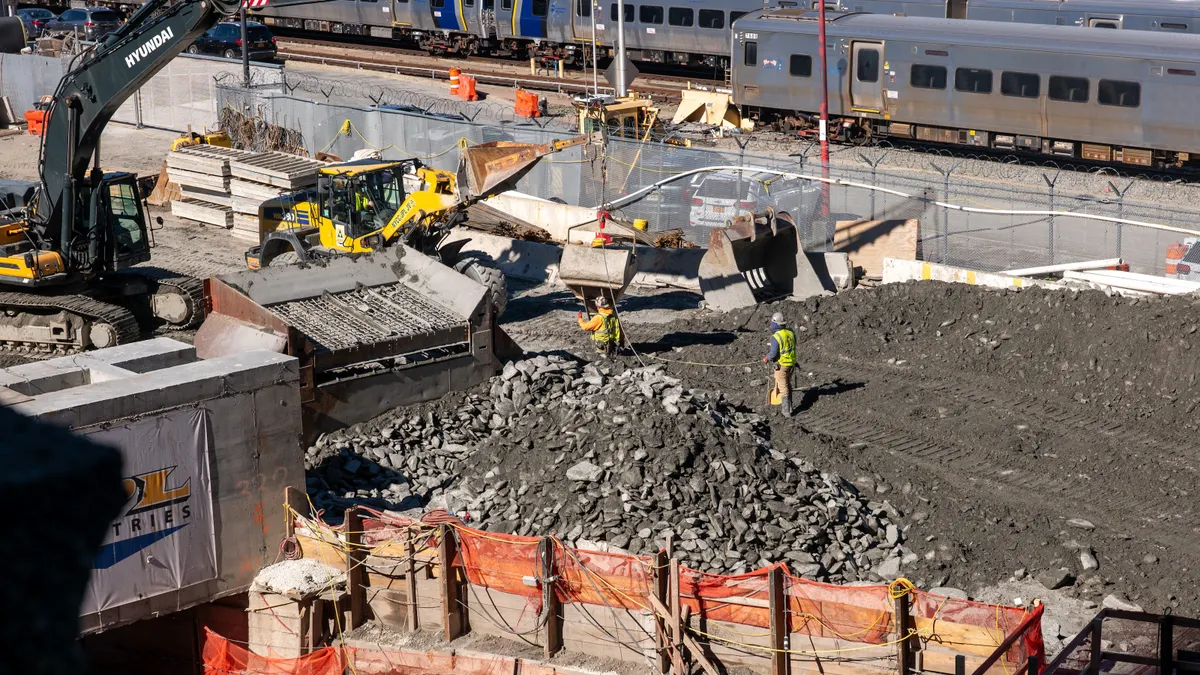This feature is a part of “The Dotted Line” series, which takes an in-depth look at the complex legal landscape of the construction industry. To view the entire series, click here.
A federal district court has delayed the new National Labor Relations Board rule on joint employers, the second time the start date has been pushed back.
The U.S. Chamber of Commerce asked the U.S. District Court for the Eastern District of Texas to block the rule. The court held a hearing on that motion Feb. 13, and said it will issue an opinion soon.
For now, the way the NLRB determines if companies are joint employers will go into effect March 11, instead of Feb. 26.
Should general contractors find themselves deemed a joint employer of a subcontractors’ employee, they could face potential litigation or other consequences for workplace violations sustained by workers. Two entities are considered joint employers when they determine together the essential terms of a workers’ employment. With multiple subcontractors on construction projects, there’s a real chance for GCs to be considered joint employers for workers on the job they don’t directly employ.
The new standard would rescind a 2020, Trump-era rule, which made it easier for “actual joint employers to avoid a finding of joint-employer status” due to a higher threshold on terms of employment, according to the NLRB.
The change in many ways reverts to a 2015 version of the rule, but employer groups have lamented that this week’s change — first announced in October — lacks clarity, potentially exposing them to litigation.

“It creates a more vague rule about when two parties could end up as joint employers,” said Dan Rosenberg, principal attorney at Chicago-based Much Shelist. “Especially in construction where there are so many parties on one site working together, especially GCs or prime trade contractors that have a lot of other trades under them. It leaves them potentially legally exposed to claims from the employees.”
General contractors should beef up their contracts in preparation for the new rule in order to limit the responsibility they have for subcontractors' employees. Firms can plan ahead by using careful contract language and communicating clearly with project leaders to ensure they don’t find themselves liable when they don't have control over an employee’s work.
The new conditions of employment
The NLRB’s new standard for joint employment considers seven factors to determine whether a worker is an employee of a company, only one of which needs to be true. They are whether the company in question is responsible for:
- Wages, benefits and other compensation.
- Hours of work and scheduling.
- The assignment of work.
- The supervision of work.
- Work rules and directions on the manner and methods of work and the grounds for discipline.
- The hiring and discharging of workers.
- Working conditions related to safety and health.
Outlining responsibilities
Defining roles and expectations for GCs and subs during the contract phase can help protect builders early on, Rosenberg said. Specifically, outlining the roles of subcontractors and noting their responsibility for the seven factors of their workers on the jobsite can help build that defense.
“There is language that you could add in the contract, that as the GC you're not responsible for and don't have control over the hours, wages, the assignment of duties — these seven factors. Put that in the subcontract and also put in there that there's no intent of the parties that they'll be a joint employer,” he said. “Make the courts have to look at the contract and basically decide that they're going to disregard some language where you make clear that that wasn't the intent.”
Contractors should have all responsibilities “to the greatest extent possible clearly delineated,” said Charles A. Krugel, a human resources attorney and counselor based in Chicago, adding they should have everything about command and control as clear as possible in documentation with subs.
Nonetheless, it’s not as though there is language that could provide an escape clause skirting the NLRB’s rule when one of the seven factors is met, Krugel said.
Walk the talk
As with any other element of a contract, parties must follow through on the duties they agree to perform, or not perform.

“You have to talk the talk and walk the walk,” Krugel said.
To ensure that’s the case, GCs should talk with project stakeholders, such as project leaders, on the dos and don’ts under the new rule.
“I would say that the biggest thing you want to do is provide general direction to your subs and try not to control particular employees,” Rosenberg said.
That could mean directing the GC’s superintendents to not oversee the scheduling, work or safety conditions of a worker employed by a subcontractor. Rosenberg and Krugel both noted this as a critique of the NLRB rule change; it could disincentivize contractors and superintendents from acting to help protect the health and safety of a worker employed by a sub.
Lack of precedent
With no examples of the rule in use yet, it’s unclear how the NLRB will handle its enforcement, due to its vague wording, said Rosenberg. Although it remains important to be prepared for what precedents the rule could bring, Rosenberg said he is not sounding the alarm bells for the average GC.
“My gut is that the focus is going to be on the bad actors,” he said. “That’s who these changes are really designed to go after, but I do think it could be abused in the situation where a big sub goes out of business and then all of a sudden the GC could have exposure.”
Nonetheless, protections for this kind of exposure already exist, as contractors who could find themselves liable should already have insurance for workers compensation, lawsuits and other preparations for liens or claims on the project.
“If you have good language in your contract, that's going to give you a leg up and give you protection. Consider whether you want to strengthen the language that might be in your template contracts already,” Rosenberg said.
____________________________________________________________
The Dotted Line series is brought to you by AIA Contract Documents®, a recognized leader in design and construction contracts. To learn more about their 250+ contracts, and to access free resources, visit their website here. AIA Contract Documents has no influence over Construction Dive’s coverage within the articles, and content does not reflect the views or opinions of The American Institute of Architects, AIA Contract Documents or its employees.





















